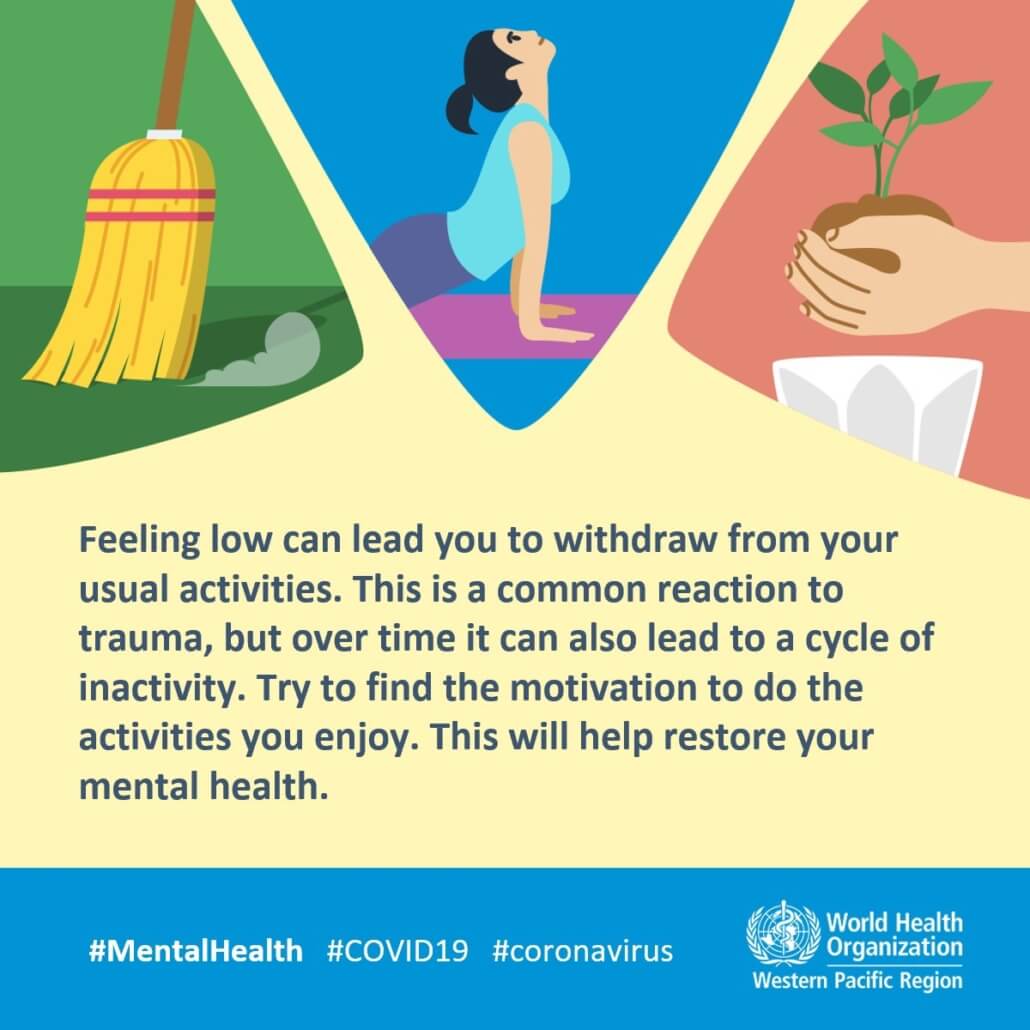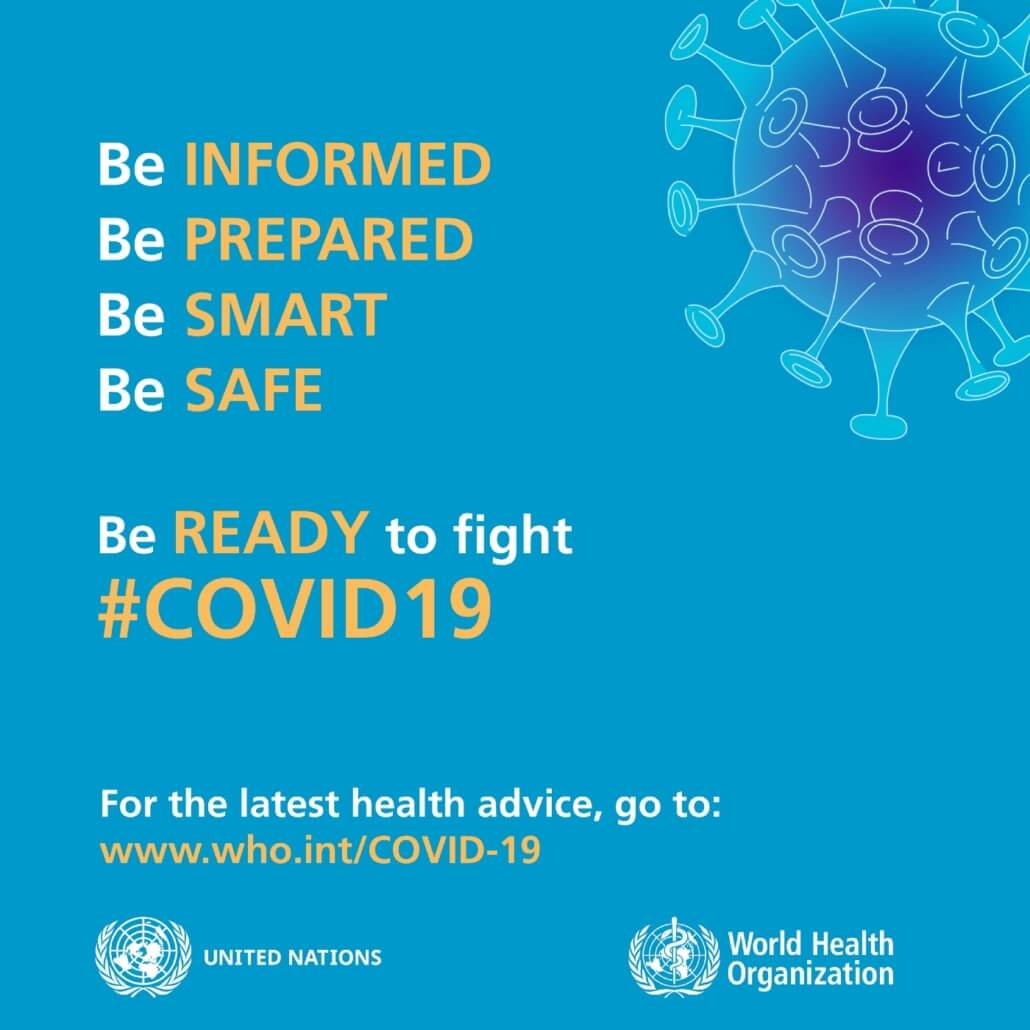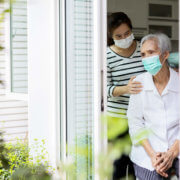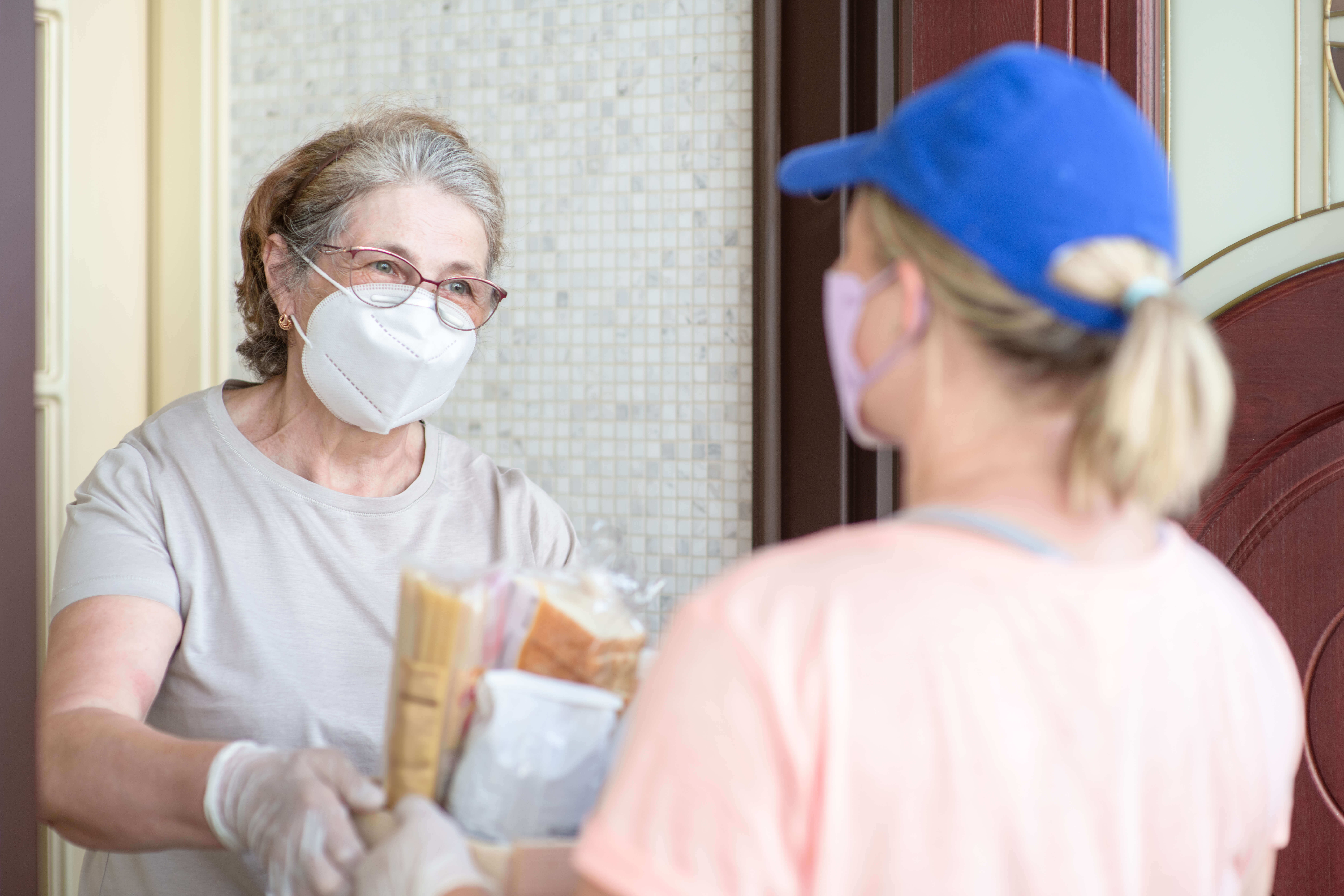Aging in a COVID-19 World
COVID-19 has had a profound impact on our society, and its effects ripple through all areas of life. We know that COVID-19 has caused many issues for older adults, a group that is at particularly high risk. However, we also know that there are strategies and resources that can be helpful in managing the new challenges presented by the pandemic.
Through our research and work with older adults, we have found the following to be the most common challenges being faced by older adults since the start of COVID-19:
- Fears and concerns/anxiety
- Feelings of depression
- Feelings of isolation
- Difficulty keeping up with medical needs
- Increased difficulty caring for self or others
- Uncertainty in planning for the future
This post will help you address any of these challenges that you, or someone in your life, may face.
Fears and concerns
The uncertainty and fear associated with COVID-19 could take a significant toll on people’s mental health. If fear and concerns begin to impact your quality of life, help might be needed.
The following are a list of resources you may find helpful:
- This page from the National Alliance on Mental Illness (NAMI) walks you through how to find a mental health professional. Check with your healthcare payer to see if these services are covered.
- Many healthcare providers operate telehealth services — so there is no need to worry about contracting COVID-19 by attending in-person appointments.
- Call the 24/7 Disaster Distress Helpline run by the Substance Abuse and Mental Health Services Administration (SAMHSA): 1–800–985–5990 or text “TalkWithUs”to 66746 to connect with a trained crisis counselor. The helpline offers crisis counseling, support, information, and tips for coping to people experiencing emotional distress related to disasters.
- Engaging in activities known to reduce anxiety: yoga, exercise, meditation, breathing exercises. You can find videos online that guide you through these types of activities on sites including AARP and Silver Sneakers. You can participate in daily mindfulness activities here.
- Taking a break from the news. Constant exposure to news stories about the pandemic can be upsetting and increase anxiety
- Talking with people about your fears and concerns — see how others are dealing with their concerns.

Feelings of Depression
Everyone reacts differently to stressful situations. Even during non-pandemic times, aging adults experience many losses, which can contribute to depression. COVID-19 is exacerbating those feelings for many people. Some of the common symptoms of depression include: difficulty concentrating, changes in appetite, changes in sleep patterns, fatigue, a feeling of hopelessness, lack of energy and sadness.
If you feel any of these symptoms, the following are a list of resources you may find helpful:
- To learn more about how to find a mental health professional, visit this page from the National Alliance on Mental Illness (NAMI). Check with your healthcare insurer to determine if these services are covered.
- Many healthcare providers offer telehealth services — so there is no need to worry about increasing your risk of contracting COVID-19 by attending in-person appointments.
- Talk with people you love about your feelings. You may find that others are feeling the same way. Talking with others can help you come up with ways for managing these feelings, and it might help to know that you are not alone in how you are feeling.
- Call the 24/7 Disaster Distress Helpline run by the Substance Abuse and Mental Health Services Administration (SAMHSA): 1–800–985–5990 or text “TalkWithUs”to 66746 to connect with a trained crisis counselor. The helpline offers crisis counseling, support, information, and tips for coping to people experiencing emotional distress related to disasters.
Isolation
Isolation has long been a common issue among older adults. With stay at home orders, closing of businesses, and recommended safety precautions during the time of COVID-19, isolation has become an even greater problem for many older adults. People are now spending more time home alone and are not able to engage in the activities that have provided meaning and joy in the past.
Here are some possible solutions and suggestions:
- The Institute on Aging’s Friendship Line — This crisis line is specifically for older adults and will make ongoing outreach calls, offering a caring ear and a friendly conversation.
- Connecting with family and friends: While being together in person may not be possible, that doesn’t mean you can’t find other ways to connect. Schedule regular calls with friends and family, and consider trying out video conferencing technology, like Zoom, Google Meet or FaceTime. To learn more about these technologies visit here to view our how-to guides for popular video conferencing technology.
- Connecting with your community: Many communities have come up with innovative responses to COVID-19, including new ways to connect from a distance, such as new outdoor dining options, outdoor concerts, drive-in movies, and other events. Mutual Aid organizations are also popping up in many communities to help community members connect and get their needs met.
- The AARP Community Connections webpage can help you find a Mutual Aid organization in your area.
- The website Nextdoor also helps connect community members and serves as a platform for sharing ideas and information about events in your local community.
- Taking advantage of the world of technology: There are many opportunities for engagement online, such as virtual museum or zoo tours, online classes, and concert streaming.
Some examples include:
- Online exercise videos through YMCA 360
- Around-the-world virtual tours
- Virtual museum tours
- Live streaming of the Met Opera
Difficulty keeping up with medical needs
Many people have not wanted or been able to see medical professionals in person since the COVID-19 pandemic began. However, not keeping up with medical needs can cause our health to deteriorate quicker.
Healthcare systems throughout the country have adapted their protocols to operate in a COVID world. You should not avoid hospitals in cases of emergencies. Speak with your doctor about diagnostic and other appointments to determine when in-person visits are necessary. For other needs, there are options to address medical needs without increasing the risk of contracting the virus:
- Many medical providers are now providing telehealth or even video appointments for new and ongoing health needs. Call your doctor’s office to see if they are offering telehealth services. If not, you can call your health insurance company to find out if they cover telehealth services, such as Teladoc.
- Medication mail delivery services will typically work with your doctors to get the right prescriptions, and will even send the medications organized and packaged by day. Amazon’s PillPack Or MedMinder are good options for medication delivery. Many other large pharmacies, such as Walgreens, CVS and Walmart also have medication delivery options.
- Some appointments do require in-person visits, but there are steps you can take to safely attend doctors’ visits during COVID-19. Learn more here.
Increased Difficulty Caring for Self or Others
COVID-19 has made life more difficult for everyone and has impacted our day-to-day lives in so many ways. Tasks that we once took for granted, like grocery shopping, going to the bank, preparing meals, and going to the pharmacy, have become much more challenging for many people, who are afraid or unable to leave their homes. If you are caring for another person, like a spouse or sibling, the activities you were doing for someone else may also be impacted.
Here are a few ideas to consider in helping you better care for yourself and others in the time of COVID-19:
- Groceries: There are grocery delivery services available online. We recommend Instacart, Peapod through Stop & Shop, and Amazon Fresh. You can create an account and place your order online. Many volunteer groups are also popping up in communities. Mutual Aid organizations, which are discussed above in the Isolation section, are a good place to look for volunteers who may be able to go grocery shopping for you.
- Banking: Nowadays, most banking can be done online through your bank’s website or app. You can deposit checks, pay bills, and transfer money between accounts without having to go to the bank. There are also payment apps you can use to transfer money to someone without having to physically exchange cash. Some popular apps include Venmo, PayPal and CashApp.
- Medications: Like going to the grocery store, going to the pharmacy can also be risky. Medication delivery services are a good way to avoid exposure at a pharmacy. many pharmacies, including CVS, Walmart, Costco and Walgreens offer medication delivery. Amazon’s PillPack is another option for medication delivery. Read more about this in our post about medication management devices. Some of the devices, like Hero and Medminder, also offer mail delivery and pharmacy services. These devices may also be a good option if you’re caring for someone, and you need additional support in managing their medications.
- Meal delivery: Many older people receive support in meal preparation from family members, friends, or community services who bring ready-made meals. You may also have been bringing meals to someone you are caring for, and are now not able to do so. Although grocery delivery services are enough for some people, others may be unable to cook and need prepared meals. Restaurant delivery apps like GrubHub and UberEats will deliver food from local restaurants. Many restaurants are also offering delivery themselves.
- Caregiving stress: If you are caring for someone else and experiencing stress related to caregiving, visit here to explore the resource center we have built for caregivers, which covers a number of caregiving topics, including how-to guides, caregiver balance, health and finding local resources.
“Find ways to reduce your stress to help yourself and the people you care about.”
— Matthew Reynold, MA, Lead Health Communication Specialist, CDC.
Uncertainty in planning for the future
Many older adults have thought about where and how they want to live as they get older. However, the COVID-19 pandemic may have thrown a wrench into those plans. People are reconsidering many aspects of their plan, including where they want to live, how close they are to family, and how to use their financial resources. Some older adults who may have previously considered moving to senior living communities are now reconsidering this plan, given the highly contagious nature of COVID-19. Other older adults who do not live near family may now consider moving closer to them so they can have a more accessible lifeline during difficult times. If your plan for the future is being affected by COVID-19, the following resources may help you adapt:
- In the Assured Allies Webinar, we provide 7 steps to creating a plan for the future taking into consideration the current pandemic.
- If you need help thinking through a plan for aging, we recommend completing the National Aging in Place Council’s questionnaire. It will walk you through essential issues for sustaining a safe and secure lifestyle in your home.
Disaster Preparedness
The COVID-19 pandemic has highlighted the importance of planning for unexpected times of disruption. It is important to be prepared for anything from unexpected medical emergencies to pandemics to weather events. It is never too late to start planning. To help you start planning for disaster situations, we recommend that you:
- Take the Assured Allies COVID-19 Risk Assessment. The assessment will help you determine the impact of the current crisis on your individual situation. After completing the assessment, you will receive a written summary of your results, which will help you identify and prioritize the most critical areas of need to address during the current crisis. This summary will also help you think through creating a plan for future crises.
- Read the Age Assured Care in a Crisis blog post. This post will walk you through the steps you can take to create a plan for managing crisis situations.
Final Thoughts
We are truly living in unprecedented times for which no one has a road map to navigate. We are all figuring things out as we go. Any feeling you are experiencing in this situation is okay, whether it’s fear, sadness, anxiety, anger, loneliness…
There are resources out there to help people cope with whatever they are going through during this period of uncertainty. We hope you can find something useful in the resources and strategies we have discussed above to help you better manage the challenges you are facing in your individual situation.

Don’t forget to follow Assured Allies on Medium, Facebook, Twitter, and LinkedIn!








